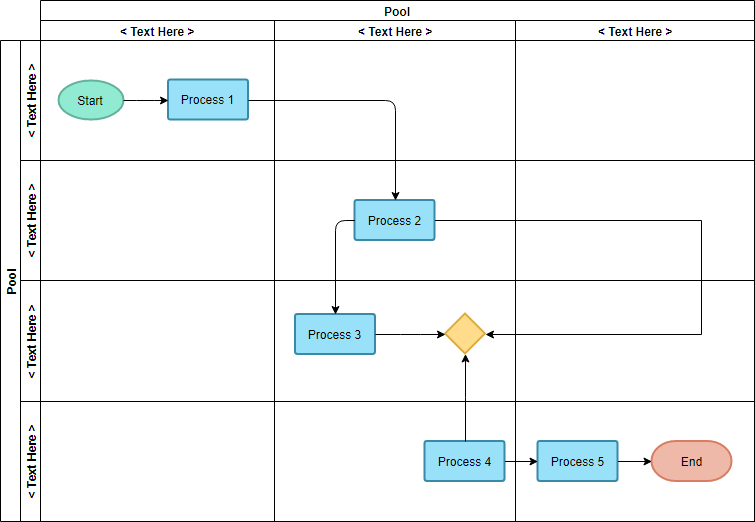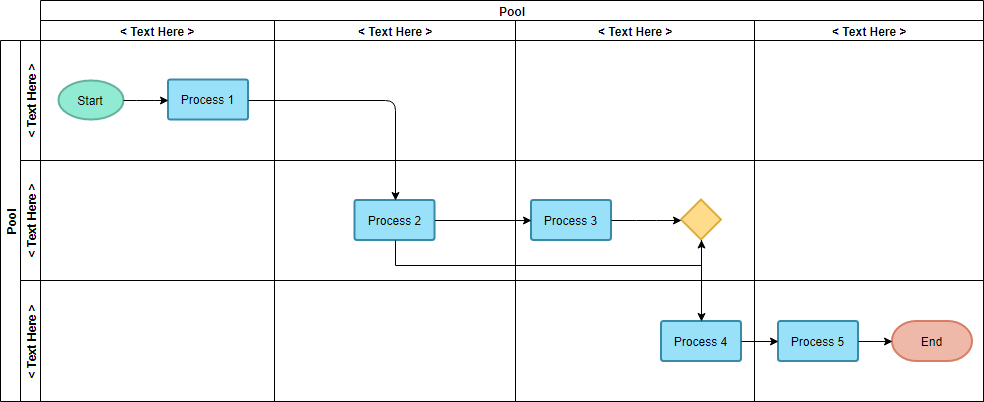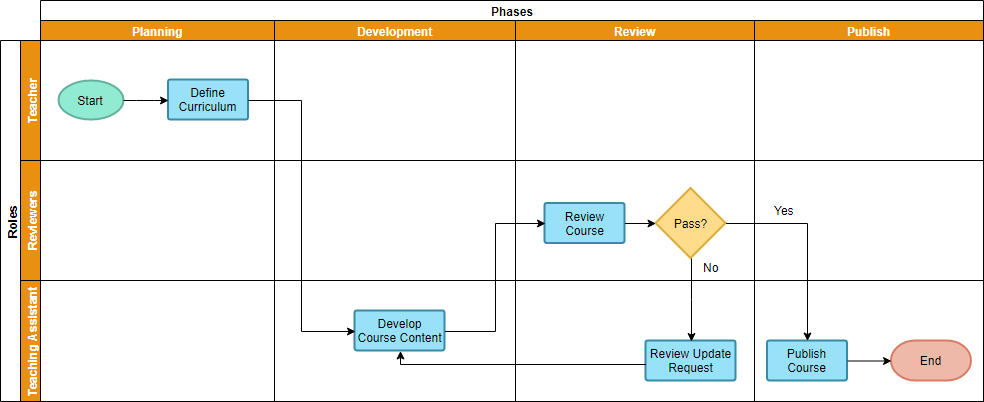Processes can be represented by flowcharts, but they have one drawback – a standard flowchart cannot indicate who is responsible for the activities. A cross-functional flowchart reveals who does what and when in swimlanes or grid-like diagram organized into sections that provide an extra dimension by assigning each process step to a category. In other words, you can use a cross-functional flowchart to portray the relationship between the steps in a process and the departments or functional areas that are responsible for those steps. For example, the category can be a stakeholder (person, role, or department), but it can also be a machine, a project phase, a resource, or some other attribute.
Why the Cross-Functional Flowchart?
As mentioned before, a business process almost always associated with departments, operational units or stakeholders in every business. This kind of process visualization and management becomes even more difficult when processes involve multiple stakeholders or are spread across multiple phases with inputs from different teams. Significant efforts are often required to understand these processes through visualization and then develop them in such a way that they can be made smoother and more efficient. In such scenarios, traditional flowcharts are not enough when it comes to visualizing such cross-functional dependencies.
Cross-function Flowcharts bring clarity to processes by defining who does what. Each swim lane is representative of a person, team, or stakeholder, making it evident who is responsible for which stage in the process to help avoid confusion.
A Cross-Function (Vertical Swimlane) Flowchart Template
This is a simple Swimlane diagram that categorizes several processes into three vertical groups and four horizontal groups. Create your swimlane diagram by using this template as a starting point. Customize the diagram for your solution. No prior registration required.

A Cross-Function (Grid Style) Flowchart Template
This is a simple Swimlane diagram that categorizes several processes into four vertical groups and three horizontal groups. This swimlane diagram template can help you create your processes in your organization.

Cross-Functional (Grid Style) Flowchart Example – Course Development
This is a Swimlane diagram example that shows the entire process of course development. The process is divided into 4 phases – Planning, Development, Review and Publish. The teacher, reviewers, and teaching assistant work together to produce a course.

Cross-Functional Flowchart Example – Payroll Process
The purchase order process flowchart shows the credit approval process of a purchase order (PO) from the creation order form, through credit review and approval by going through three different departments (Sales, Credit Department, and Management):
